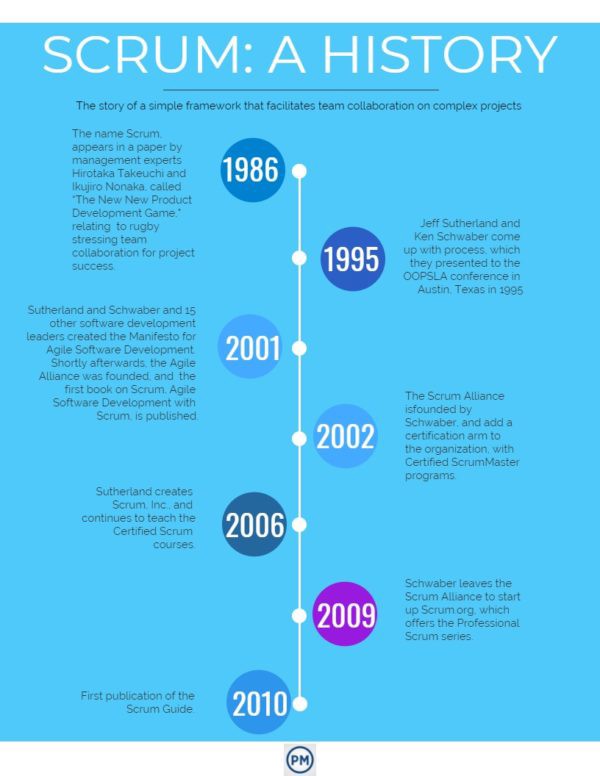Scrum is not only one of the most widely used software development method in the agile world but also one of the most popular frameworks.
The history of the Scrum method starts in 1986. That year, two Japanese business experts introduced the term in the context of product development. Hirotaka Takeuchi and Ikujiro Nonaka published the article, “New New Product Development Game” (the double “New” is indeed part of the title) in the Harvard Business Review. The authors described a new approach to commercial product development that would increase speed and flexibility. Their inspiration came from case studies from manufacturing firms in the automotive, photocopier, and printer industries.
What Scrum is and isn’t?
- At a high level, Scrum is lightweight and easy to understand, but when you dig in you will find that it is difficult to master.
- Scrum is a framework or model; it is not a process.
- Scrum does not tell you how to do things, it tells you what needs to be done and lets you figure out how to do it.
- To make it even more confusing, Scrum is not literal; you must modify what it says to match your circumstances.
- Scrum is a well-balanced framework, all its parts are needed in order to be effective.
Scrum Brief History
Scrum was born out of the manufacturing in 1986 and subsequently extended y the software development industry as an agile methodology to counter established waterfall-style project management processes.
Jeff Sutherland originated the first Scrum project in 1993. Sutherland, working with Ken Schwaber, developed Scrum as a formal process in 1995. In 2001, Sutherland and Schwaber, along with several pioneers of agile thinking converged at a ski resort in Utah to assess commonalities in agile methods. The Agile Manifesto was created out of this group’s consensus.


